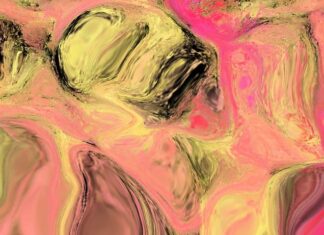Nail Pitting, a common nail disorder, is characterized by the presence of small depressions or indentations on the surface of the nails. These pits may vary in size and depth and can affect one or multiple nails. Nail Pitting can be indicative of an underlying health condition or may occur as an isolated cosmetic issue. Understanding the causes, symptoms, and potential treatment options for Nail Pitting is crucial to managing the condition effectively. Here are five important things you need to know about Nail Pitting:
1. Definition and Appearance: Nail Pitting is a nail abnormality characterized by the presence of tiny depressions or pits on the nail plate’s surface. These pits typically appear as shallow, round or oval indentations and can vary in number and distribution. In some cases, the pits may be barely noticeable, while in others, they can be more pronounced, affecting the nail’s appearance and texture. Nail Pitting can occur in both fingernails and toenails, and its severity can range from mild to severe.
2. Causes and Associations: Nail Pitting is often associated with various underlying conditions and diseases, making it essential to identify the root cause. One of the most common causes is psoriasis, a chronic autoimmune skin disorder that affects around 2-3% of the global population. Psoriasis-related Nail Pitting occurs due to abnormal growth and differentiation of the nail matrix cells. Apart from psoriasis, Nail Pitting can also be linked to other conditions like eczema, alopecia areata, connective tissue disorders, and reactive arthritis. Furthermore, Nail Pitting has been reported in individuals with genetic disorders like trichorrhexis invaginata (bamboo hair syndrome) and incontinentia pigmenti.
3. Diagnosis and Evaluation: To diagnose Nail Pitting, a dermatologist or healthcare provider will conduct a thorough physical examination of the affected nails and inquire about the patient’s medical history. They will also look for additional skin or joint abnormalities that might suggest an underlying condition. In some cases, a nail biopsy may be performed to examine the nail tissue microscopically. Additionally, if there are other symptoms present, further investigations like blood tests or imaging studies may be recommended to identify any associated medical conditions.
4. Treatment and Management: The management of Nail Pitting primarily depends on the underlying cause. In cases where the pitting is linked to an underlying condition like psoriasis, treating the primary condition may lead to an improvement in the nail pits as well. For psoriasis-related Nail Pitting, treatments may include topical corticosteroids, vitamin D analogs, and immunomodulatory drugs. Regularly using emollients or moisturizers can also help improve nail texture. In isolated cases of Nail Pitting without an underlying medical condition, no specific treatment may be necessary, and the focus may be on cosmetic measures like nail buffing and grooming to improve the nail’s appearance.
5. Preventive Measures: While some causes of Nail Pitting may not be preventable, taking certain precautions can help maintain nail health. Keeping the nails clean and dry, avoiding harsh chemicals or trauma to the nails, and using gloves while working with detergents or chemicals can reduce the risk of developing nail abnormalities. Additionally, adopting a healthy lifestyle with a balanced diet and managing stress levels may contribute to overall nail well-being.
Nail Pitting is a common nail disorder characterized by small pits or depressions on the nail surface. It can be associated with various underlying conditions, most notably psoriasis, and can occur in isolation as well. Proper diagnosis and identification of the underlying cause are crucial for effective management. Treatments may involve addressing the primary condition or employing cosmetic measures to enhance nail appearance. By taking preventive measures, individuals can promote nail health and reduce the risk of developing Nail Pitting.
Nail Pitting, a common nail disorder, is characterized by the presence of small depressions or indentations on the surface of the nails. These pits may vary in size and depth and can affect one or multiple nails. Nail Pitting can be indicative of an underlying health condition or may occur as an isolated cosmetic issue. Understanding the causes, symptoms, and potential treatment options for Nail Pitting is crucial to managing the condition effectively.
Nail Pitting is often associated with various underlying conditions and diseases, making it essential to identify the root cause. One of the most common causes is psoriasis, a chronic autoimmune skin disorder that affects around 2-3% of the global population. Psoriasis-related Nail Pitting occurs due to abnormal growth and differentiation of the nail matrix cells. Apart from psoriasis, Nail Pitting can also be linked to other conditions like eczema, alopecia areata, connective tissue disorders, and reactive arthritis. Furthermore, Nail Pitting has been reported in individuals with genetic disorders like trichorrhexis invaginata (bamboo hair syndrome) and incontinentia pigmenti.
To diagnose Nail Pitting, a dermatologist or healthcare provider will conduct a thorough physical examination of the affected nails and inquire about the patient’s medical history. They will also look for additional skin or joint abnormalities that might suggest an underlying condition. In some cases, a nail biopsy may be performed to examine the nail tissue microscopically. Additionally, if there are other symptoms present, further investigations like blood tests or imaging studies may be recommended to identify any associated medical conditions.
The management of Nail Pitting primarily depends on the underlying cause. In cases where the pitting is linked to an underlying condition like psoriasis, treating the primary condition may lead to an improvement in the nail pits as well. For psoriasis-related Nail Pitting, treatments may include topical corticosteroids, vitamin D analogs, and immunomodulatory drugs. Regularly using emollients or moisturizers can also help improve nail texture. In isolated cases of Nail Pitting without an underlying medical condition, no specific treatment may be necessary, and the focus may be on cosmetic measures like nail buffing and grooming to improve the nail’s appearance.
While some causes of Nail Pitting may not be preventable, taking certain precautions can help maintain nail health. Keeping the nails clean and dry, avoiding harsh chemicals or trauma to the nails, and using gloves while working with detergents or chemicals can reduce the risk of developing nail abnormalities. Additionally, adopting a healthy lifestyle with a balanced diet and managing stress levels may contribute to overall nail well-being.
In conclusion, Nail Pitting is a common nail disorder characterized by small pits or depressions on the nail surface. It can be associated with various underlying conditions, most notably psoriasis, and can occur in isolation as well. Proper diagnosis and identification of the underlying cause are crucial for effective management. Treatments may involve addressing the primary condition or employing cosmetic measures to enhance nail appearance. By taking preventive measures, individuals can promote nail health and reduce the risk of developing Nail Pitting.






















